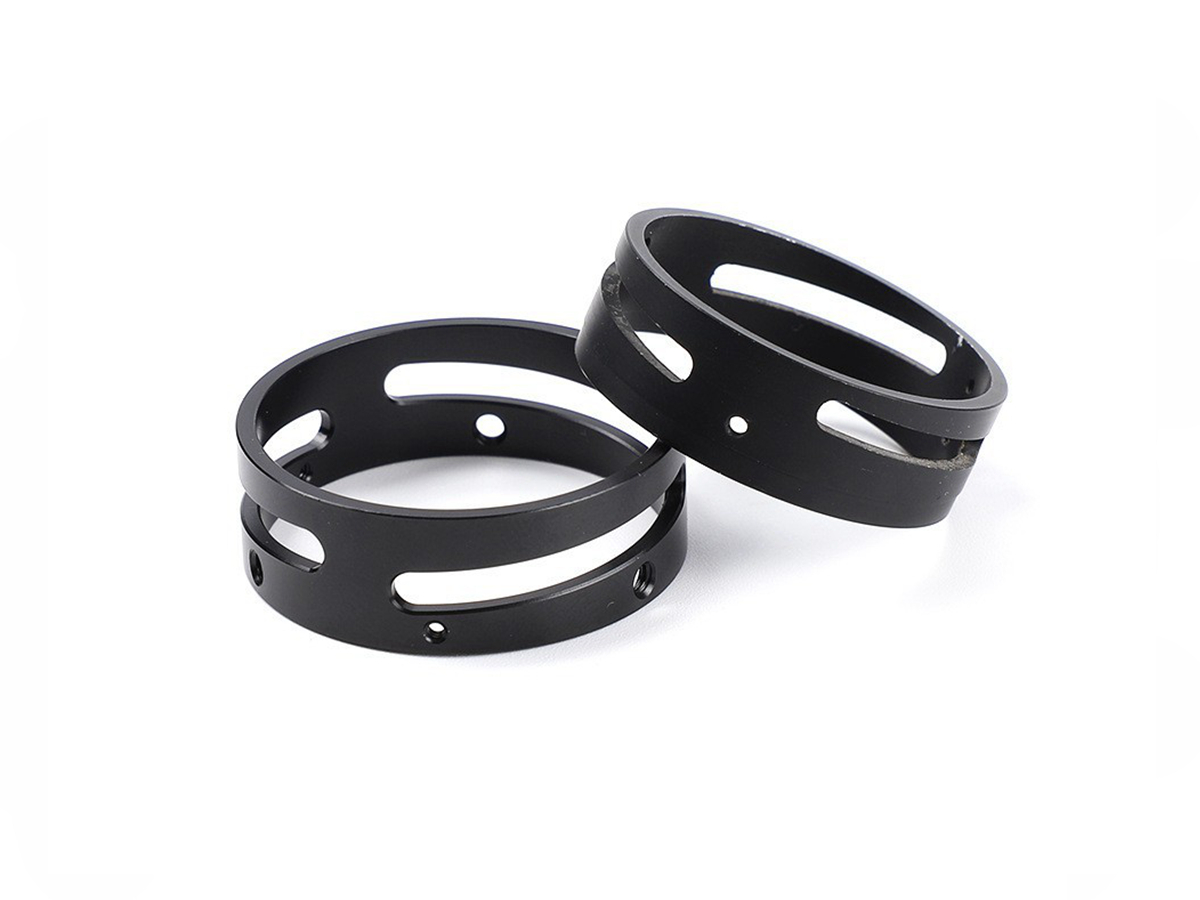Precision CNC Machining Services for Mounts Used in Industrial Automation
Introduction
In industrial automation, mounts are pivotal in securely positioning sensors, actuators, and other critical components to maintain precise alignment and reliable operation. Achieving exact dimensions and exceptional finishes is paramount for these mounts, making CNC machining an ideal manufacturing choice. Utilizing advanced CNC machining services, manufacturers achieve dimensional accuracy up to ±0.005 mm and surface finishes as fine as Ra 0.8 µm, ensuring stability and durability in rigorous industrial environments.
Customized CNC machining ensures mounts are meticulously tailored to specific automation needs, significantly enhancing equipment accuracy, performance, and longevity within the industrial automation, robotics, and industrial equipment sectors.
Material Performance
Comparison Table
Material | Tensile Strength (MPa) | Hardness (HV) | Density (g/cm³) | Corrosion Resistance (ASTM B117) | Typical Applications | Advantages |
|---|---|---|---|---|---|---|
290-310 | 95-110 HV | 2.70 | ≥1000 hrs | Lightweight mounting brackets, sensor mounts | Lightweight, strong corrosion resistance | |
505-620 | 180-200 HV | 8.0 | ≥1500 hrs | High-strength mounting plates, brackets | High strength, excellent corrosion resistance | |
570-700 | 210-250 HV | 7.85 | ≥600 hrs | Heavy-duty mounts, load-bearing fixtures | High strength, durable and stable | |
360-400 | 150-170 HV | 8.5 | ≥500 hrs | Small precision mounts, connectors | Excellent machinability, dimensional stability |
Selection Strategy
Selecting appropriate materials for CNC machined mounts requires careful consideration of the operating environment, mechanical load, and corrosion resistance:
Aluminum 6061-T6 is optimal for lightweight sensor and actuator mounts due to its exceptional strength-to-weight ratio, good machinability, and corrosion resistance exceeding 1000 hrs (ASTM B117).
Stainless Steel SUS304 is chosen for robust mounts exposed to harsh environments, providing tensile strengths up to 620 MPa and exceptional corrosion resistance, ensuring long-term operational reliability.
Carbon Steel 1045 is ideal for high-strength, load-bearing mounts due to its high tensile strength (570-700 MPa), making it suitable for heavy-duty automation systems where durability is essential.
Brass C360 offers outstanding machinability and dimensional stability, which makes it excellent for smaller precision mounts and connectors that require tight tolerances.
CNC Machining Process
Process Comparison
CNC Machining Technology | Dimensional Accuracy (mm) | Surface Roughness (Ra µm) | Typical Applications | Key Advantages |
|---|---|---|---|---|
±0.005-0.01 | 0.4-1.0 | Complex-shaped mounts, custom brackets | Excellent accuracy, complex geometries | |
±0.005-0.01 | 0.6-1.2 | Cylindrical mounts, shafts | High-volume consistency, cylindrical accuracy | |
±0.01 | 1.0-2.0 | Precise hole positioning in mounts | Fast, precise hole drilling | |
±0.003-0.008 | 0.2-0.8 | Intricate mounts, complex angled features | Enhanced accuracy, versatile capabilities |
Selection Strategy
The right CNC machining method significantly impacts mount precision and application success:
CNC Milling efficiently produces mounts with complex shapes and profiles, suitable for specialized sensor and actuator positioning components.
CNC Turning best suits cylindrical or symmetrical mounts, providing high accuracy and consistency for components like precision shafts or cylindrical connectors.
CNC Drilling guarantees precise hole placement, which is essential for alignment mounts, sensor installations, and fixtures.
Multi-Axis CNC Machining ensures high precision and complexity, ideal for producing intricate mounts and brackets with complex geometries in a single setup.
Surface Treatment
Treatment Comparison
Treatment Method | Wear Resistance (HV) | Corrosion Resistance (ASTM B117) | Max Operating Temp (°C) | Typical Applications | Key Features |
|---|---|---|---|---|---|
500-700 HV | ≥1500 hrs | 300°C | Aluminum sensor mounts, brackets | Durable oxide coating (10-25 µm thickness) | |
~600 HV | ≥1000 hrs | 400°C | Mounts requiring consistent corrosion protection | Uniform coating (25-50 µm thickness) | |
Moderate | ≥800 hrs | 200°C | Protective coatings for larger mounts | Robust coating, durable finish |
Selection Strategy
Surface treatments enhance CNC machined mount durability, performance, and longevity:
Anodizing provides excellent corrosion resistance (≥1500 hrs ASTM B117), ideal for aluminum mounts in challenging environments, enhancing durability and aesthetics.
Electroless Nickel Plating ensures uniform, high-quality corrosion protection, essential for precision mounts requiring consistent surface coverage and resistance up to 1000 hours ASTM B117.
Powder Coating offers durable protection and improved corrosion resistance (≥800 hrs ASTM B117), beneficial for large mounts or brackets requiring robust, aesthetically pleasing finishes.
Quality Assurance Procedures
Ensuring precision and reliability of CNC machined mounts demands stringent quality assurance protocols:
Dimensional Verification: Coordinate Measuring Machine (CMM) inspections to validate dimensions and tolerances within ±0.005 mm.
Surface Finish Inspection: Surface roughness verified to meet specified Ra ≤0.8 µm using precision profilometers.
Material Testing: Mechanical property verification, including tensile and hardness tests according to ASTM and ISO standards.
Non-Destructive Testing (NDT): Ultrasonic and radiographic inspection to detect hidden defects, ensuring structural integrity.
Corrosion Testing: ASTM B117 salt spray tests validate the corrosion resistance of mounts, confirming suitability for environmental exposure.
ISO 9001 Traceability: Comprehensive documentation and strict adherence to ISO standards ensure consistency and traceability throughout production.
Industry Applications
Precision sensor and actuator mounts
Robotic positioning brackets
Specialized mounting plates and fixtures
Mechanical alignment and support components
Related FAQs:
Why choose precision CNC machining for automation system mounts?
What materials are most suitable for automation mounting components?
How do different CNC machining processes influence mount accuracy?
Which surface treatments improve durability of CNC machined mounts?
What quality controls ensure CNC machined mounts meet strict tolerances?

